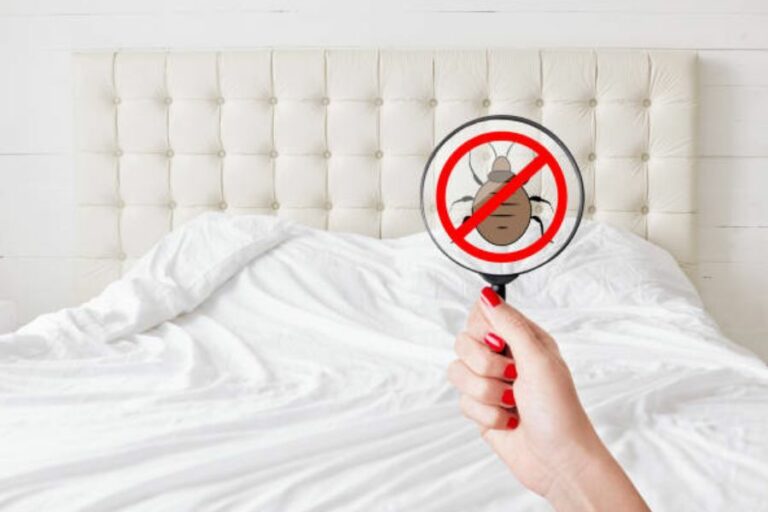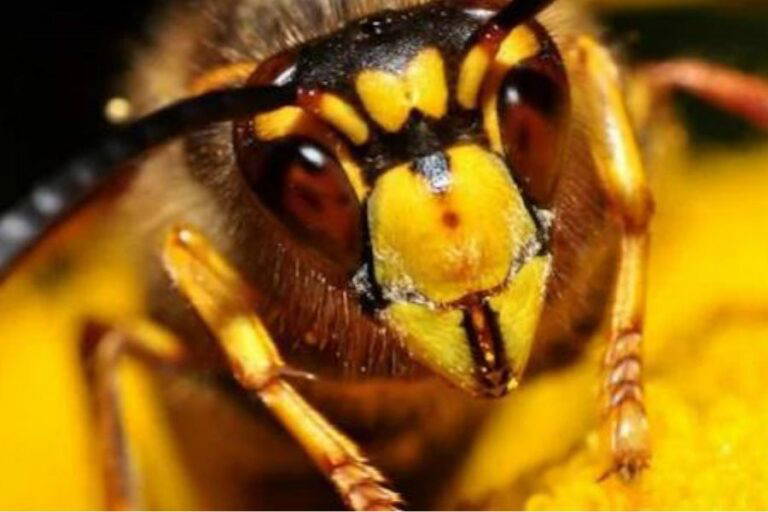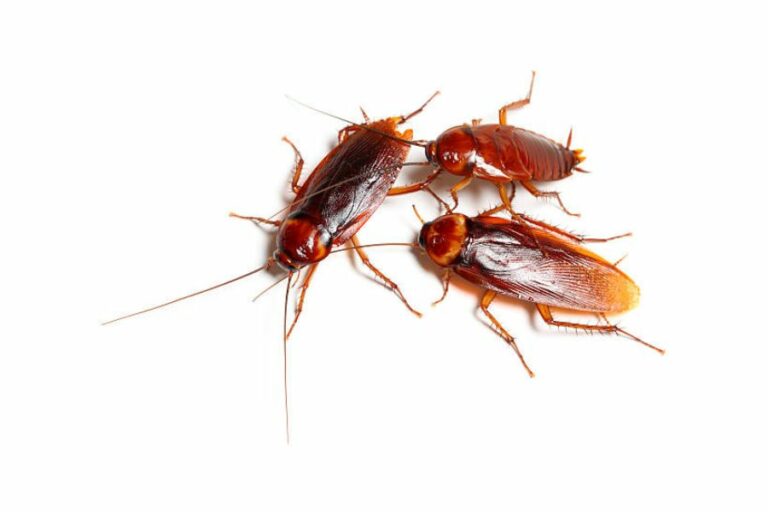Bee Nests: Identification to Elimination
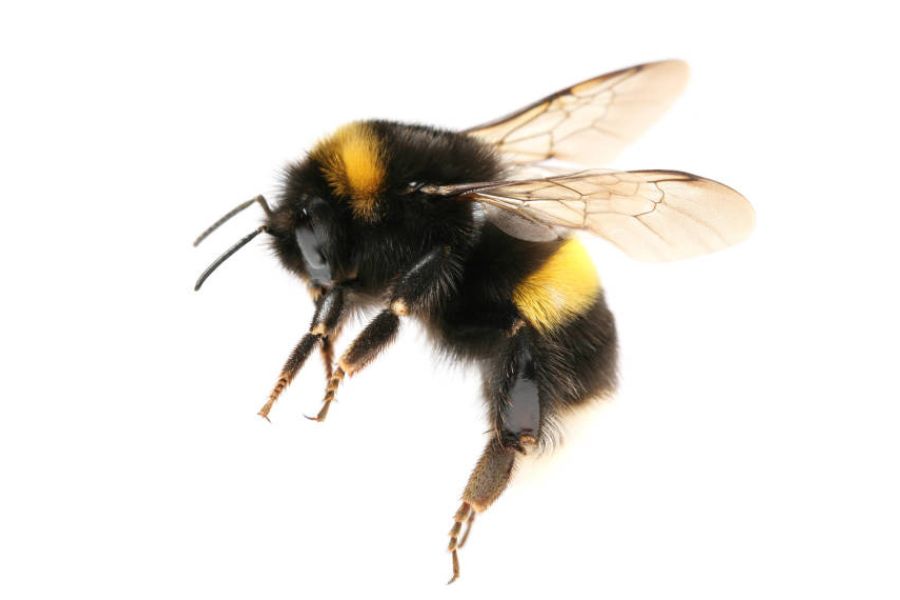
From Identification to Elimination: Handling Bee Nests with Professional Expertise
In this blog post, we will explore the process of identifying, treating, and eliminating bee nests with the help of professional services. Dealing with bee nests requires caution and expertise to ensure the safety of both humans and bees. We will address common concerns and questions related to bee nests, offering insights into their identification, removal, and prevention while highlighting the importance of relying on professional assistance.
How do I identify bee nests?
Identifying a bee nest requires careful observation and understanding of typical nesting behaviours. Here’s a step-by-step guide to help you identify a bee nest:
- Increased Bee Activity: Pay attention to an unusually high number of bees in a specific area of your property. If you notice a concentrated gathering of bees repeatedly flying to and from a particular location, it could indicate a nearby nest.
- Buzzing Sounds: Listen for a consistent buzzing or humming noise from a particular spot. Bees create a distinct buzzing sound as they fly in and out of their nest.
- Visual Clues: Look for physical structures that resemble a honeycomb. Bee nests are typically composed of wax cells arranged in a hexagonal pattern. These cells may be visible if the nest is exposed or in an easily observable area.
- Bee Flight Patterns: Observe the flight patterns of the bees. Bees tend to fly in a straight line when returning to their nest. If you notice bees consistently flying in a particular direction, it can indicate the nest’s proximity.
It is essential to exercise caution when attempting to identify a bee nest. Keep a safe distance from the nest to avoid disturbing the bees or risking potential stings. It is best to seek professional assistance if you are still determining or comfortable with the identification process.
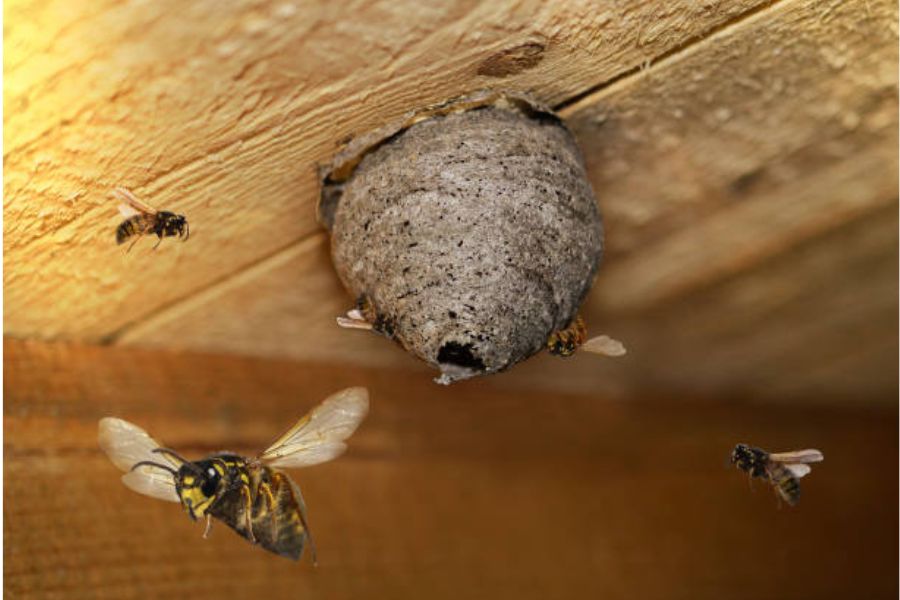
What are the signs of bees in my garden?
Bees in your garden can be beneficial for pollination, but it’s essential to be aware of their presence and understand their behaviour. Here are some signs that bees or bee nests may be visiting your garden:
- Flower Visitation: Bees are attracted to flowers as a source of nectar and pollen. Seeing bees actively visiting and moving from flower to flower is a strong indication that they are present in your garden.
- Pollen Transfers: Look for signs of pollen transfer on the bodies of bees. Bees have specialised body structures that collect and carry pollen from flowers. If you notice yellow or orange pollen grains on the bees’ bodies, it confirms their presence and activity in your garden.
- Bee Activity During Daylight Hours: Bees are diurnal insects, meaning they are primarily active during daylight hours. If you consistently spot bees flying and foraging in your garden during the day, it suggests that they have established a nearby food source, such as flowering plants or trees.
- Bee Sounds: Listen to the distinctive buzzing sound bees create as they move from flower to flower. Their buzzing activity indicates their presence and activity within your garden.
- Nesting Behaviour: Occasionally, you may come across bees scouting for potential nesting sites in your garden. They may investigate crevices, holes, or other sheltered areas. While this does not necessarily mean they have established a nest, it indicates that bees are interested in your garden as a potential nesting location.
Remember, if you encounter bees in your garden, allowing them to continue their essential pollination work undisturbed is generally best. However, if their presence becomes a safety concern or you suspect bee nests on your property, it is advisable to seek professional guidance to ensure proper management and relocation.
How do I get rid of bee nests?
When dealing with a bee nest, you can choose from natural repellents, relocation methods, DIY approaches, or professional pest control services to effectively eliminate it. Keep reading to find out more about each option.
How do professional services treat bee nests?
Professional services typically treat a bee nest using specialised methods and tools. One common approach involves the application of professional insecticidal dust. This dust contains insecticides specifically formulated for bee nest treatment. The dust is carefully applied to the nest, targeting the bees and their breeding areas. The insecticidal dust is designed to eliminate the bees while minimising potential risks to humans and the environment. Professional technicians are trained to handle and apply the dust safely, ensuring effective treatment of the bee nest. It’s important to note that professional services prioritise the preservation of bees whenever possible, opting for relocation methods if the nest belongs to a beneficial bee species.
How does professional service remove bee nests?
Professional bee nest removal involves a systematic approach to ensure safe and effective nest elimination. Trained technicians assess the nest’s characteristics, including size, location, and bee species. They wear appropriate protective gear, such as bee suits and veils, to minimise the risk of stings. The nest is then carefully extracted using specialised tools to minimise disruption and maintain the bees’ well-being. Depending on the situation, the nest may be relocated to a more suitable environment or destroyed if relocation is not feasible. After removal, the area is thoroughly cleaned to prevent future bee attraction, and preventive measures may be recommended. Professional services prioritise the safety of humans and bees throughout removal.
Is it ok to leave bee nests?
Whether it is ok to leave bee nests depends on the circumstances and the potential risks involved. Here are some considerations:
- Safety: If bee nests are located in an area that poses minimal risk to humans, such as a remote part of the property or far from high-traffic areas, leaving it undisturbed may be a viable option.
- Beneficial Bees: If the nest belongs to a species of bees that are essential pollinators and advantageous to the ecosystem, exploring alternative options, such as relocation by a beekeeper or implementing measures to coexist with the bees, is generally recommended.
- Aggressive Bees or Health Concerns: If the bees nesting on your property are known to be aggressive or threaten human safety, or if someone in the vicinity has an allergy to bee stings, it is advisable to address the nest.
- Property Damage: Consider the potential damage the bees may cause to structures or infrastructure on your property. If the nest’s location poses a risk of property damage, removing or relocating the nest may be necessary.
- Local Regulations: Be aware of local laws or regulations governing bee nest removal or relocation. Some areas have specific guidelines to protect native or endangered bee species.
It is essential to consult with local experts, such as professional pest control services or beekeepers, to assess the situation and determine the best course of action. They can provide guidance tailored to your specific circumstances and help ensure the safety of both humans and bees.
Can I remove a bee nest myself?
Removing bee nests yourself is generally not recommended and can be dangerous. Bees can become defensive and aggressive when their nest is disturbed, leading to a higher risk of bee stings. Additionally, if not appropriately handled, removing bee nests can cause harm to the bees and the surrounding environment. It requires knowledge, experience, and appropriate protective gear to ensure your safety and minimise damage to the bees. It is best leave bee nests removal to trained professionals with the expertise and equipment to handle the situation safely and effectively.
What should I do if I find bee nests on my property?
If you find bee nests on your property, it’s essential to approach the situation carefully and prioritise safety. Here are the recommended steps to take:
- Assess the Situation: Determine the location, size, and type of bees involved. Assess whether the nest poses an immediate threat to humans or property.
- Maintain Distance: Keep a safe distance from the nest and avoid disturbing the bees. Bees can become defensive if they perceive a threat, so it’s essential not to provoke them.
- Do Not Disturb the Nest: Refrain from attempting to remove or disturb the nest yourself. DIY removal can be dangerous and may harm the bees or lead to bee stings.
- Contact a Professional: It is strongly recommended to seek the assistance of a professional pest control service or a local beekeeper experienced in nest removal. They have the expertise, tools, and knowledge to handle the situation safely and environmentally friendly.
- Follow Professional Advice: Follow their instructions and guidance once you have contacted a professional. They will assess the nest, provide appropriate recommendations, and take steps for safe removal or relocation.
- Educate and Inform Others: Share information with others present or affected by the bee nest, such as family members, neighbours, or relevant authorities. This will help ensure everyone’s safety and understanding of the situation.
Remember, the welfare of both humans and bees should be considered when dealing with a bee nest.
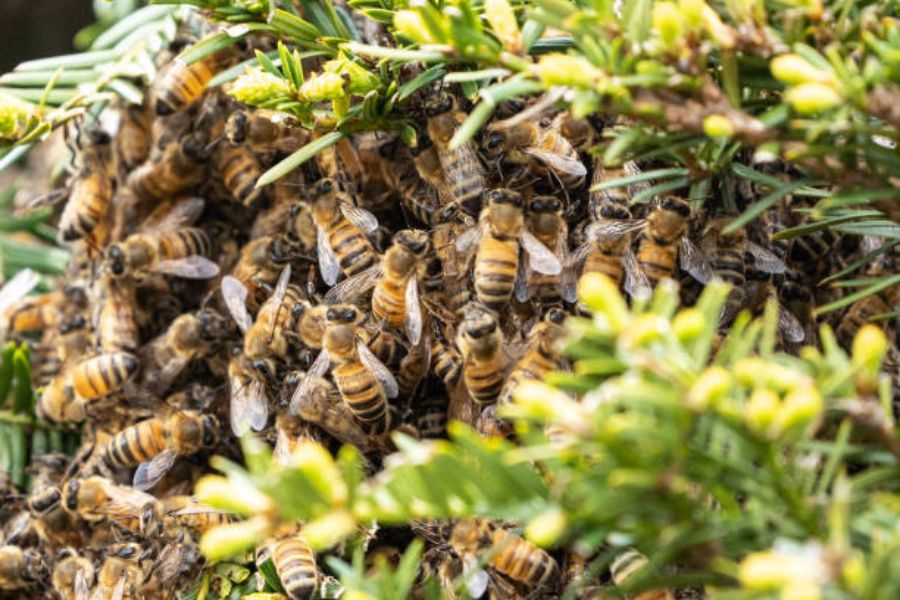
How can I prevent bees from nesting on my property?
You can take several proactive measures to prevent bees from nesting on your property. Here are some effective prevention strategies:
- Sealing Entry Points: Inspect your property for any openings or gaps in the exterior, such as cracks in walls, gaps around windows and doors, or holes in the roof. Seal these entry points to prevent bees from accessing potential nesting sites.
- Regular Maintenance: Keep your property well-maintained and free of clutter. Trim overgrown vegetation and trees, as bees may be attracted to these areas for nesting. Regularly inspect and maintain outdoor structures, such as sheds or unused equipment, as they can provide nesting opportunities.
- Remove Attractive Features: Bees are attracted to certain features, such as standing water, food sources, and sweet-smelling flowers. Eliminate standing water sources, like puddles or water containers, to reduce their appeal to bees. Consider planting bee-repellent plants or relocating flowers away from high-traffic areas.
- Secure Waste and Food Sources: Properly dispose of food waste and secure trash bins tightly to avoid attracting bees. Clean up any food spills or residues promptly, especially outdoors.
- Bee Houses and Nesting Boxes: Provide designated nesting areas for bees by installing bee houses or nesting boxes away from main activity areas. This can help redirect their nesting behaviour to more desirable locations.
- Professional Inspection: Schedule periodic inspections by professional pest control services to identify and address any potential nesting sites or bee-related issues before they become problematic.
- Educate and Inform: Educate yourself and others on the importance of bees and their role in the ecosystem. By raising awareness, you can promote bee-friendly practices within your community.
By implementing these prevention strategies, you can minimise the likelihood of bees nesting on your property while still supporting their essential role as pollinators in a safe and environmentally conscious manner.
How much does it cost to remove a bee nest?
The cost of removing a bee nest can vary depending on several factors, including the location, accessibility, size of the nest, and the specific service provider. Prices can also vary based on your geographical location. Generally, bee nest removal services start from around £70. However, it’s important to note that this is a rough estimate, and the actual cost can be higher or lower depending on the unique circumstances of the nest and the expertise required for its removal. To get an accurate cost estimate, it’s advisable to contact local pest control services or beekeepers, who can assess the situation and provide you with a more precise quote based on your specific needs.
Are you searching for bee nest treatment near me?
If you require bee nest treatment or removal services, we encourage you to contact Liverpool Pest Control by Gokill. Our team is experienced in handling bee nests and can assist you with your needs. You can reach us by phone, email, or by filling out our contact form on our website. We are here to provide professional assistance and address any concerns regarding bee nest treatment.
How to treat bees with natural repellents?
Treating bees with natural repellents involves using substances that bees find unappealing, encouraging them to avoid specific areas. Natural repellents for bees include essential oils like peppermint, citronella, or eucalyptus. These oils can be diluted in water and sprayed around areas where you want to deter bees. However, it’s important to note that while natural repellents may provide temporary relief, they may not be a fool proof solution for long-term bee control.
How to treat bees naturally?
Treating bees naturally focuses on finding humane and eco-friendly methods to address bee-related concerns. This may involve contacting local beekeepers who can safely relocate bee nests, ensuring the well-being of the bees while managing any risks they pose. Additionally, creating bee-friendly environments with suitable nesting options and planting bee-attracting flowers can help redirect bees to more desired areas, minimising the need for immediate treatment.
Do DIY methods work to remove bees?
DIY methods for removing bees can be effective in certain situations. Still, their success largely depends on factors such as the size and location of the nest, the type of bees involved, and your level of experience and safety precautions. Simple DIY methods like sealing entry points or using natural deterrents can sometimes be sufficient for minor bee issues. However, it’s crucial to exercise caution, as attempting more extensive or aggressive removal without proper knowledge and equipment can be dangerous. For larger or more aggressive bee nests, it is recommended to seek professional assistance to ensure safe and effective removal.
